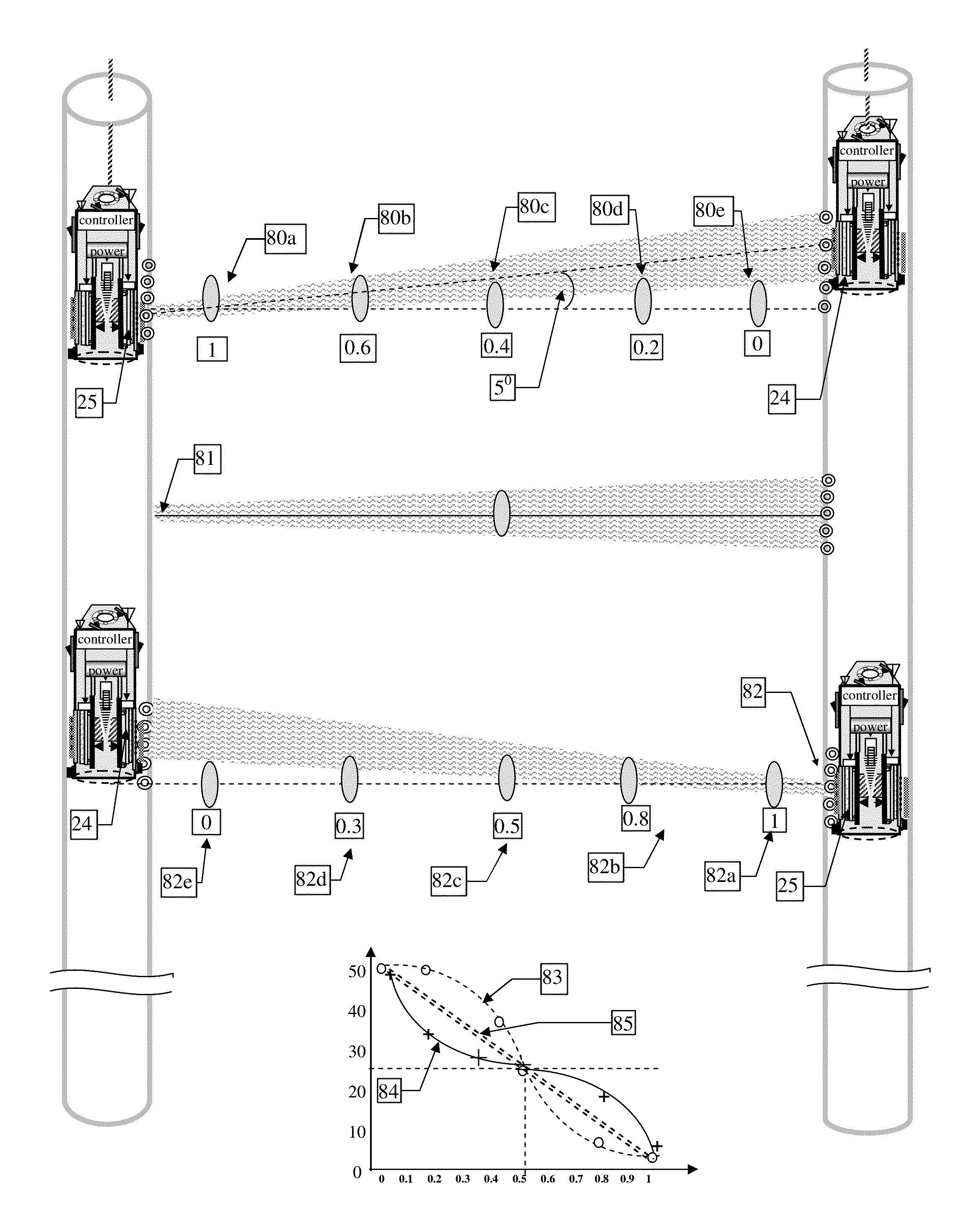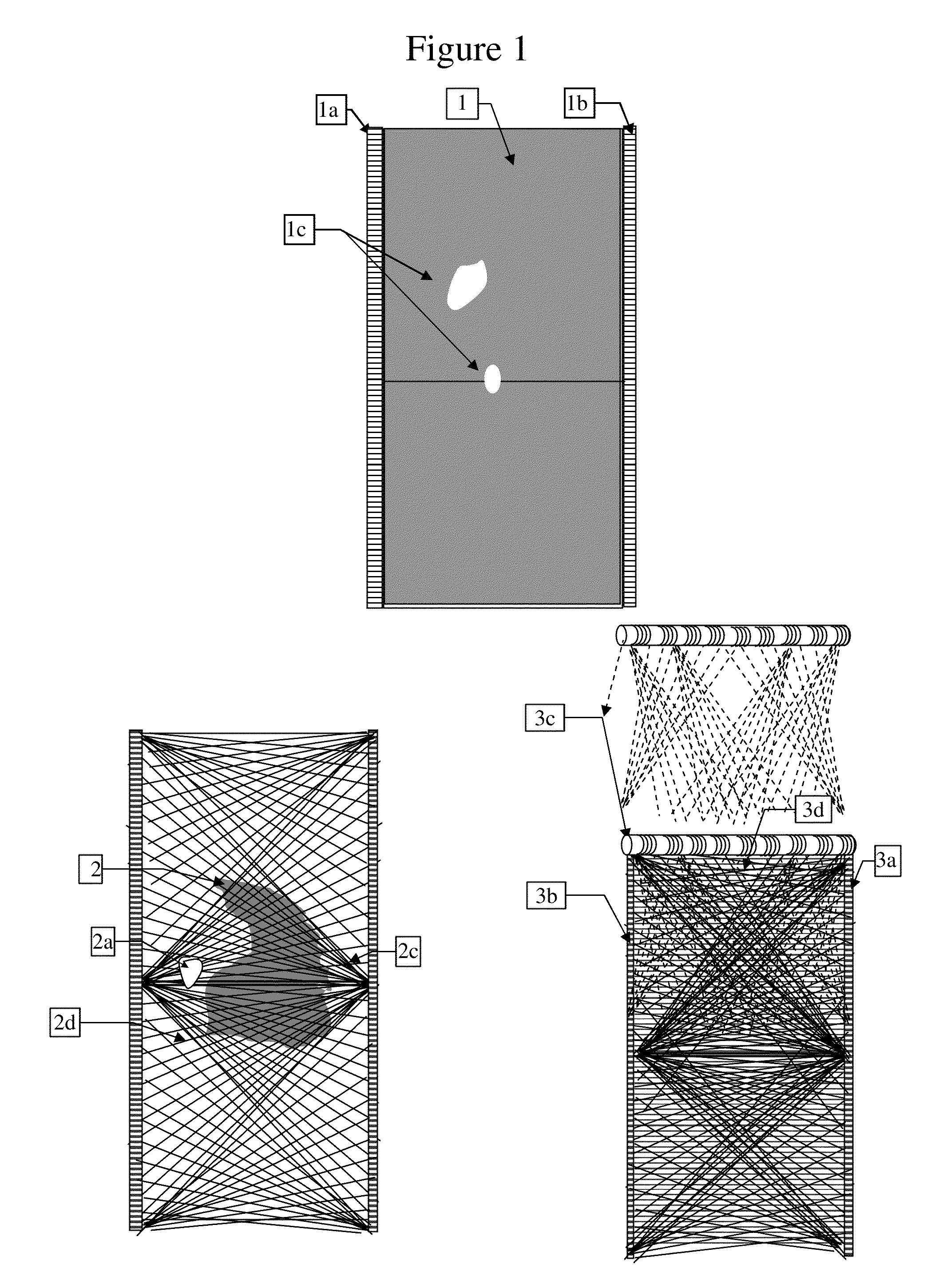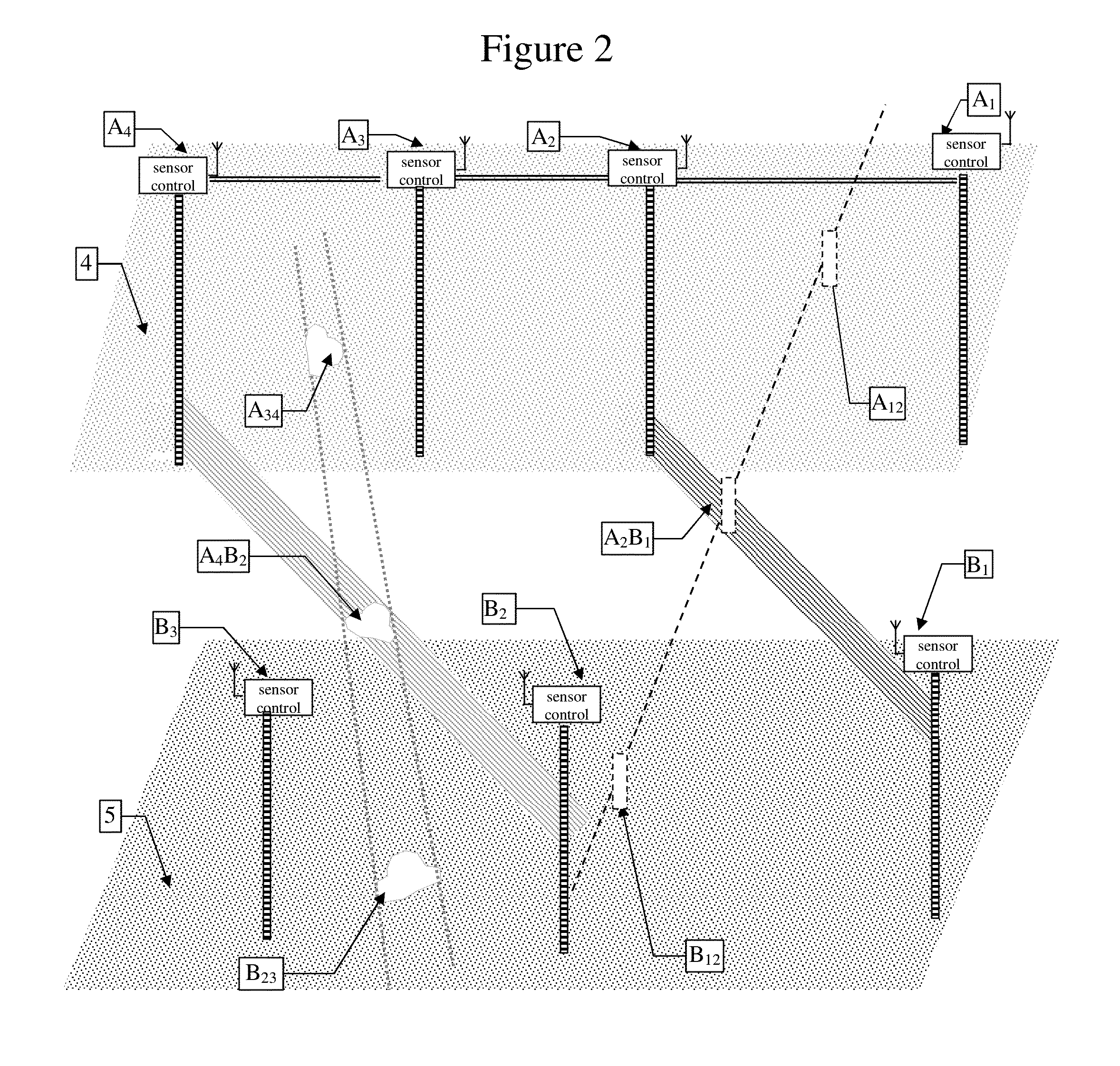Method and apparatus for mapping the underground soil
a technology of underground soil and mapping method, which is applied in the field of geophysics, mining and security, can solve the problems of interfering electromagnetic waves with soil, and is considered noise, and achieve the effect of maximizing the signal-to-noise ratio
- Summary
- Abstract
- Description
- Claims
- Application Information
AI Technical Summary
Benefits of technology
Problems solved by technology
Method used
Image
Examples
Embodiment Construction
[0039]FIG. 1 illustrates 3 modes of imaging the underground soil with electromagnetic waves. The first mode is applicable specifically to non-magnetic soils characterized by relatively uniform or slowly changing conductivity and permittivity, with air cavities inside. Imaging cross sections of these kinds of soils is straightforward, by measuring straight-line transmission of electromagnetic waves along parallel lines 1 from near surface to practically any depth, assuming that attenuation doesn't change much, but when crossing air cavities 1c. The air cavities are spotted as decreased attenuation of straight-line transmission between a transmitter and a receiver at the same depth, within tubes 1a, 1b inserted into the soil.
[0040]The second mode illustrated in FIG. 1 pertains to soils with large changes in the soil characteristics of conductivity, permittivity and permeability such that the straight line attenuation between two points at the same depth cannot be attributed only to an...
PUM
 Login to View More
Login to View More Abstract
Description
Claims
Application Information
 Login to View More
Login to View More - R&D
- Intellectual Property
- Life Sciences
- Materials
- Tech Scout
- Unparalleled Data Quality
- Higher Quality Content
- 60% Fewer Hallucinations
Browse by: Latest US Patents, China's latest patents, Technical Efficacy Thesaurus, Application Domain, Technology Topic, Popular Technical Reports.
© 2025 PatSnap. All rights reserved.Legal|Privacy policy|Modern Slavery Act Transparency Statement|Sitemap|About US| Contact US: help@patsnap.com



